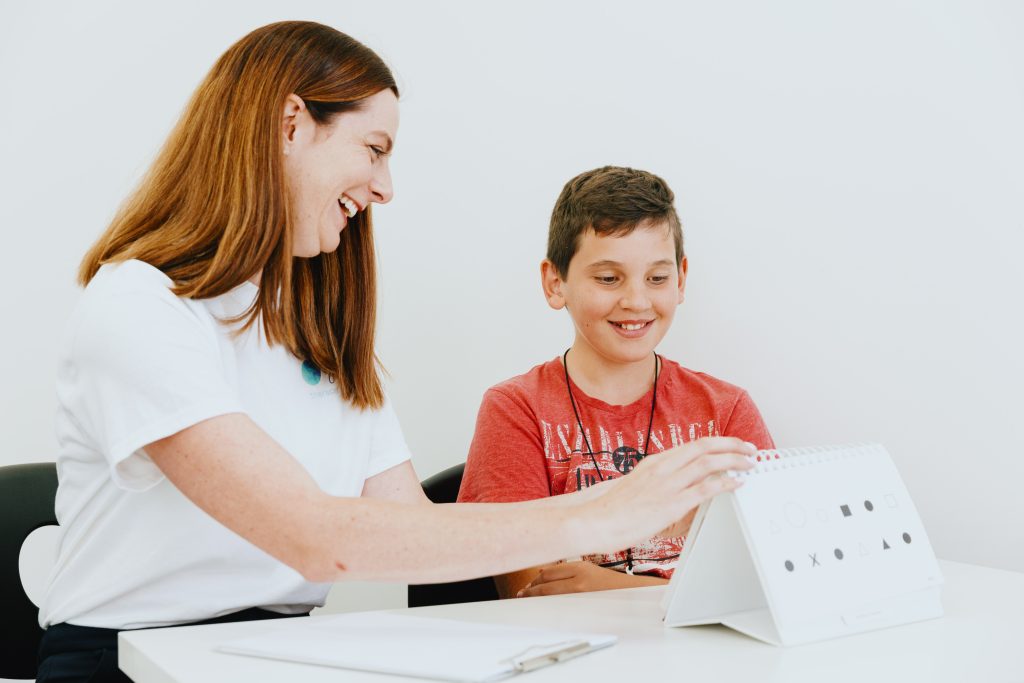


Articulation errors can be a roadblock for some children, trapping them in therapy for years with limited progress. Often, these difficulties stem from structural issues, and Orofacial Myofunctional Therapy (OMT) emerges as a crucial component in achieving speech intelligibility.
OMT revolves around the function of our facial, head, and neck muscles. The primary objective is to establish correct resting tongue posture, closed lips, and nasal breathing.
Low resting and anterior tongue rest posture can lead to speech errors that involve anterior placement of the tongue. Commonly, this manifests as a lisp on ‘s’ and ‘z’ sounds, affecting palatal sounds like ‘sh,’ ‘zh,’ ‘ch,’ and ‘j.’ Additionally, alveolar sounds, produced by elevating the tongue tip to the spot on the palate just behind the top front teeth, such as ‘t,’ ‘d,’ ‘l,’ and ‘n,’ may also be impacted. These sounds are often mispronounced with the tongue pushing against the teeth or protruding beyond them.
Sometimes, the functional changes are more subtle. Have you ever encountered kids or adults who exhibit unique jaw or lip movements while speaking? They might be compensating for tethered oral tissues. In many cases, individuals who have undergone extensive speech therapy following a traditional approach find a way to make the sound, but through compensatory motor patterns. Over time, asymmetrical muscle use can affect craniofacial growth. We come across adults with TMJ syndrome and chronic migraines as a result.



Although we can’t predict therapy outcomes with a crystal ball, aiming for acoustically accurate speech production without compensation is a worthwhile goal. This is especially crucial because this population is at risk of TMJ issues, migraines, and, in severe cases, sleep apnea.
OMT serves as a vehicle to increase awareness of our facial features, including lips and tongue. A comprehensive OMT assessment also examines any structural factors that may affect speech, such as tethered oral tissues like tongue and lip ties. Some tongue ties may be posterior, appearing differently from the conventional image of a tongue tie. Nevertheless, restrictions at the back of the tongue can significantly impact tongue movement, directly influencing speech production.
Many clients who struggle with speech sound errors due to orofacial myofunctional disorders often grapple with feeding issues, such as a tongue thrust swallow, and breathing problems, like mouth breathing instead of nasal breathing.
To delve deeper into this subject, explore our other Orofacial Myofunctional (OMT) blogs. For further information, reach out to us at spottherapyhub@gmail.com or call us at 9326 6000. Don’t forget to tune in to our engaging Spot Therapy Hub Podcast, available on Apple Podcast and Spotify.